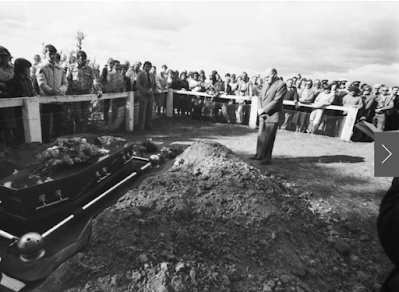He lived outdoors for nearly all this time, travelling between several bush hideaways along the river and shunning nearly all human contact. From around 1928 until his death in 1982 he was almost a complete hermit, seldom conversing with anyone but presenting as a gentle eccentric who loved animals and performed anonymous acts of kindness to farmers in the area. These included fixing broken fences and crutching flyblown sheep, usually working at night while the farmers and their families slept.
From what is known of his earlier life, he was a New Zealand shearer who arrived in Australia around 1928 but could not find work in the local area around Wentworth. His solution to this problem was to walk away from society and he “went bush” - staying there for the rest of his life.
He lived off the land by fishing and trapping small game such as wallabies and foxes and dressed himself with discarded clothing left out for him by various station owners in the area. He lived in the wild, beautiful and primeval landscape along the Murray and Darling Rivers, particularly around the Wentworth and Renmark areas, constantly on the move between a series of hidden camps he set up along the way.
He travelled a lot at night, sometimes covering up to 50 kilometres at a stretch, always avoiding any townships in the area. He often swam back and forth across the Murray River, both to change camps and to avoid human contact. He reportedly slept in trees on occasion, leading to his nickname “The Possum”.
He had to endure the full gamut of Australian weather - blazing temperatures in summer, freezing conditions in winter, and all the floods, droughts and dust-storms that are all part of the climate of the area.
In particular he had to negotiate the massive Murray River floods of 1956 when widespread inundation affected much of “Possum Country”, including Mannum, Mildura, Renmark and Wentworth.
Flooding around Wentworth Hospital, 1956
(Courtesy of the Sunraysia Daily)
From the late 1970’s those who new of him became increasingly concerned for his welfare, as it became inevitable that his advancing age would collide with his primitive lifestyle.
And that day arrived in 1982 when his body was found, alone in the bush, by two woodcutters near Ned’s Corner Station (about 70 km west of Mildura) on 4th August. It was estimated that he had died some three weeks before, about mid to late July. He was 81 years of age.
Possum’s” funeral was held at nearby Wangumma Cemetery, close to his beloved Murray River and was attended by a large crowd of locals.
(Courtesy of the Sunraysia Daily)
On his simple tombstone is engraved:
David James Jones
“Possum”
1901-1982
At rest where he roamed
Living to that age under the harsh circumstances of his everyday life was quite remarkable. However it may have been more than old age that finally caused his death - the weather may well have been a factor.
For 1982 was an infamous year in the meteorological history of Australia. It saw the combined and in-phase influence of four major climate phenomena – El Nino, Indian Ocean Dipole, Inter-Decadal Pacific Oscillation and Southern Annular Mode.
Verdon-Kidd and Kiem (*) noted that in 1982 “all four modes were locked into their dry phase” resulting in one of the most intense droughts in Australia’s recorded history. This would eventually lead into the devastating Ash Wednesday bushfires of February 1983.
In times of drought clear skies are more frequent than normal and during the winter months over inland areas this means plummeting overnight temperatures and a direct consequence – that of frost - often follows.
June and July 1982 were exceptionally cold months along the Murray River, as revealed by the temperature record from the Bureau of Meteorology’s weather station at Mildura Airport (AP). This station opened up in 1946, replacing the old site at the Mildura Post Office that operated between 1889 and 1949. The AP station has taken continuous records ever since, including rainfall, temperature, humidity and wind data. It is likely “The Possum” saw aircraft taking off and landing from the airport as he passed by along the Murray River, about 8 km to the north.
The mean minimum temperature for June 1982 at Mildura AP was 2.2C, still the coldest June on record there. For July it was only 1.5C – the coldest July on record and indeed the coldest of any month so far recorded at Mildura AP.
In June below zero minimum temperatures were reported on nine occasions and in July, seven. There were many cold frosty mornings across the general area during this time.
On the 21st July the mercury fell to minus 4.0C – the coldest temperature ever recorded at Mildura Airport.
It is possible, perhaps even likely, that this succession of extreme minima were too much for “The Possum”, and directly contributed to his death.
Today a life sized statue of “The Possum” stands at Fotherby Park, Wentworth, showing him in a characteristic pose - shielding his eyes as he looks across the Murray River and with a rope belt supporting his trousers.
(Image: R. N. Whitaker)
(*) Nature and causes of protracted droughts in southeast Australia:
Comparison between the Federation, WWII, and Big Dry droughts
Danielle C. Verdon-Kidd and Anthony S. Kiem
GEOPHYSICAL RESEARCH LETTERS, VOL. 36, 2009
2. Rainfall deciles for 1982 (Bureau of Meteorology)




